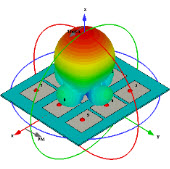请问802.11中ACK的timeout时间是多少?
谢谢
不知道。。。
difs?
好像在哪儿看过,但设的多少记不清了,实现相关?
其实我想说看标准的...
协议中没有给出这个值的定义
你可以看一下这里,有一些考虑
http://madwifi.org/wiki/UserDocs/LongDistance
In 802.11a/b/g all data transmissions are acknowledged by the receiving radio and the transmitter makes a number of retransmission attempts if such an ack is not received. (Note that there are ways to send unacknowledged packets using multicast or multimedia features.) The acknowledgments affect long distance links in that the transmitter waits for a limited amount of time before retrying. If the ACK timeout is set too short, the transmitter will start retransmitting before an ACK could have possibly been received and this retransmission may well actually interfere with an ACK that is "on it's way".(It is important to note that this retransmission will occur after a random backoff) The end result is that actual throughput is very low and the number of retransmissions is excessively high. If, conversely, the ACK timeout is set too long, the transmitter waits unncesessarily long before retransmitting in the case no ACK is received. This represents lost time and thus reduces the throughput of the link.
In addition to the ACK timeout, there are a number of other time constants that need to be adjusted for long distance links. These time constants have to do with the collision sensing and avoidance parts of the protocol.
The bottom line is that you need to determine the distance between the radios (or the maximum distance in the case of a mobile installation), calculate the time of flight of the packets in microseconds, and then set the ACK timeout to a little more than a round-trip time as the CTS timeout as well as the Slot time to the one-way time. These settings are available in /proc/sys/dev/wifiX as slottime, ctstimeout, and acktimeout. The easiest way to change these settings is using the athctrl utility provided with the driver. For example, athctrl -d 15000 sets these parameters appropriately for stations located 15000 meters apart (approx 9.4 miles). Note that it is important that all stations that are communicating with each other use the same value. So if you have an access point in a point-to-multipoint set-up where one client is 10000 meters away and the other is 15000 meters away then you should run athctrl -d 15000 on all three nodes.
One little problem with the slot time is that 802.11g requires it to be switched between 9us and 20us depending on whether a 802.11b client is associated or not (or something like that). You will thus see the slot time suddenly be reset to one of these values if any association operation takes place on your access point. There is a patch in the works to lock the slot time to what you set it. This description will be updated when that goes into the code base...
相关文章:
- 请推荐WSN Localization和Tracking的综述文章,多谢(05-08)
- David J.C. MacKay主页上的那些tcl程序如何执行呀?(05-08)
- ack帧发送的速率为什么要不同(05-08)
- 请教关于packet size(05-08)
- 请问CSMA/CA Backoff过程(05-08)
- 关于Grassmannian line packing请教(05-08)











